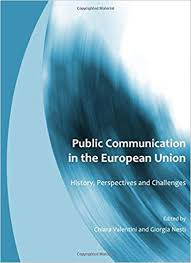Abstract
The European Union (EU) has a problem with its citizens. For about fifty years the political elites have pursued the agenda of political and economic integration, while the broader public remained uninformed and by and large uninterested in what was happening in Brussels. This mode of governance has clearly shown its limits: when the citizens were asked whether they support the plan to introduce a constitutional treaty in June 2005, fifty-five percent of the French voters said “Non” and sixty-five percent of the Dutch “Nee”. In June 2008, fifty-three percent of the Irish voters rejected the Lisbon Treaty, the follow-up to the constitutional treaty, and in 2009 the European Parliament (EP) suffered a record weak election turnout. This came as no surprise, considering that barely every second EU-citizen knew that he or she can vote for the EP (in fall 2007, 48 percent of the respondents knew that they can vote) (CEC, 2008a: 10).

Brüggemann, Michael (2010): Public Relations between Propaganda and the Public Sphere. The Information Policy of the European Commission. In Chiara Valentini, Giorgia Nesti (Eds.): Public Communication in the European Union. History, Perspectives and Challenges. Cambridge: Cambridge Scholars Publishing, pp. 67–92.
